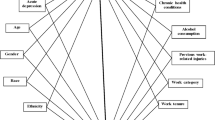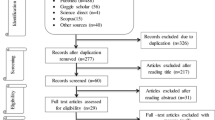The purpose of this paper is to review the current trends in non-fatal injury profiles of workers in the United States. It is generally accepted that occupational injury and illness rates are affected by many factors, such as the amount and quality of training, employee turnover rates, work experience, extent of mechanization and automation, job-related parameters, and worker gender. In the last decade, not only have the technologies used in the workplace changed significantly, there has been a greater awareness among employers and employees as to the importance of containing work injuries. Additionally, the extent of outsourcing for labor-intensive jobs has increased dramatically owing to cheaper labor costs in places such as China and Mexico. These changes have affected the manufacturing sector of US industry more than any other sector. How these changes have influenced the injury and illness profiles of the American worker is of considerable interest given the increased attention paid to work-workplace design, injury hazard control, and ergonomics in general. In this paper, we compare the injury and illness profiles of US workers separated by nearly a decade. The trends from early 1990s are compared to those from early 2000s. Data from the Bureau of Labor Statistics were used to compile the injury statistics. The results of our comparison show that while the absolute numbers of work-related injuries and illnesses have declined over the last 10 years, the basic trends associated with different factors remain almost unchanged. The reasons for this decline are discussed in this paper.
























Similar content being viewed by others
REFERENCES
Bureau of Labor Statistics, 2005, United States Department of Labor. http://www.bls.gov/iif/home.htm
Mital A, Pennathur A, Kansal A. Nonfatal occupational injuries in the United States Part I—Overall trends and data summaries. Int J Ind Ergon 1999a; 25: 109–129.
Mital A, Pennathur A, Kansal A. Nonfatal occupational injuries in the United States Part II—Back injuries. Int J Ind Ergon 1999b; 25: 131–150.
Mital A, Pennathur A, Kansal A. Nonfatal occupational injuries in the United States Part III—Injuries to upper extremities. Int J Ind Ergon 1999c; 25: 151–169.
Mital A, Pennathur A. Recognition of Musculoskeletal Injury Hazards; Final Report, NIOSH, Contract # CDC-94071VID, Cincinnati, Ohio; 1996.
Author information
Authors and Affiliations
Corresponding author
Rights and permissions
About this article
Cite this article
Subramanian, A., Desai, A., Prakash, L. et al. Changing Trends in US Injury Profiles: Revisiting Non-Fatal Occupational Injury Statistics. J Occup Rehabil 16, 120–152 (2006). https://doi.org/10.1007/s10926-005-9012-1
Published:
Issue Date:
DOI: https://doi.org/10.1007/s10926-005-9012-1




